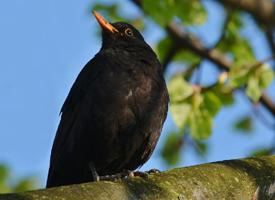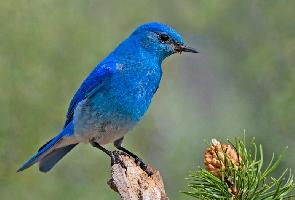
Description de l'animal
The Northern Wheatear (Oenanthe oenanthe) is a captivating small passerine bird that belongs to the Muscicapidae family, which primarily comprises the Old World flycatchers. This species exhibits a remarkable combination of resilience, long-distance migratory behavior, and distinctive plumage, making it a subject of interest among birdwatchers and ornithologists alike.Morphologically, the Northern Wheatear presents a slender yet sturdy build, with a length ranging from 14 to 15.5 centimeters and a wingspan that spans approximately 26 to 32 centimeters. Adults typically weigh between 20 to 30 grams, with slight variations based on age and gender. One of the most striking features of the Northern Wheatear is its plumage, which varies significantly between males, females, and juveniles, as well as between the breeding and non-breeding seasons. Adult males in the breeding season boast a vivid blue-grey back and a clean white belly, complemented by a striking black eye mask and wings. Their tail is characterized by a distinctive T-pattern, predominantly black with white outer feathers. In contrast, females and juveniles display more subdued tones; they are generally browner with less pronounced markings.
The Northern Wheatear exhibits a broad geographical range, breeding across the Arctic and sub-Arctic regions of Europe, Asia, and North America. It is a long-distance migrant, which undertakes an awe-inspiring journey to Sub-Saharan Africa, the Arabian Peninsula, and the Indian subcontinent to spend the winter. This journey is particularly notable for the populations breeding in Alaska and Canada, as they embark on a transoceanic flight across the North Atlantic to reach their wintering grounds, covering distances of up to 14,000 kilometers.
Habitat-wise, the Northern Wheatear is highly adaptable, thriving in a variety of open landscapes. During the breeding season, it favors areas with low vegetation, such as tundra, moorlands, and rocky outcrops, where it can nest in crevices or under rocks. While wintering, it occupies similarly open habitats, including savannahs, deserts, and cultivated fields.
Dietarily, the Northern Wheatear is predominantly insectivorous, feeding on a wide range of insects and other invertebrates. Its diet includes beetles, caterpillars, spiders, and flies, which it typically forages for on the ground, using a characteristic hop-and-pause technique.
Reproductively, the Northern Wheatear is monogamous, with pairs forming strong bonds during the breeding season. The female is primarily responsible for constructing the nest, which is a cup-shaped structure made of grass and moss, cleverly concealed under rocks or in cavities. She lays between 4 to 7 eggs, which she incubates for about two weeks. Both parents are involved in feeding the chicks, which fledge approximately 15 to 20 days after hatching.
In terms of conservation status, the Northern Wheatear is currently classified as Least Concern by the International Union for Conservation of Nature (IUCN), reflecting its wide distribution and relatively stable population. However, like many migratory species, it faces threats from habitat loss, climate change, and other anthropogenic factors, underscoring the importance of ongoing conservation efforts to ensure its future survival.
In summary, the Northern Wheatear is a remarkable bird, admired for its striking appearance, impressive migratory feats, and adaptability to diverse habitats
Animaux similaires
Nouvelles photos d'animaux
Top 10 des animaux
- Dolphin gull (Leucophaeus scoresbii)
- Diana monkey (Cercopithecus diana)
- Moustached guenon (Cercopithecus cephus)
- Galápagos tortoise (Geochelone nigra complex)
- Japanese macaque (Macaca fuscata)
- Russian tortoise (Testudo horsfieldii)
- Stone loach (Barbatula barbatula)
- Greek tortoise (Testudo graeca)
- Common flying dragon (Draco volans)
- Vendace (Coregonus albula)


